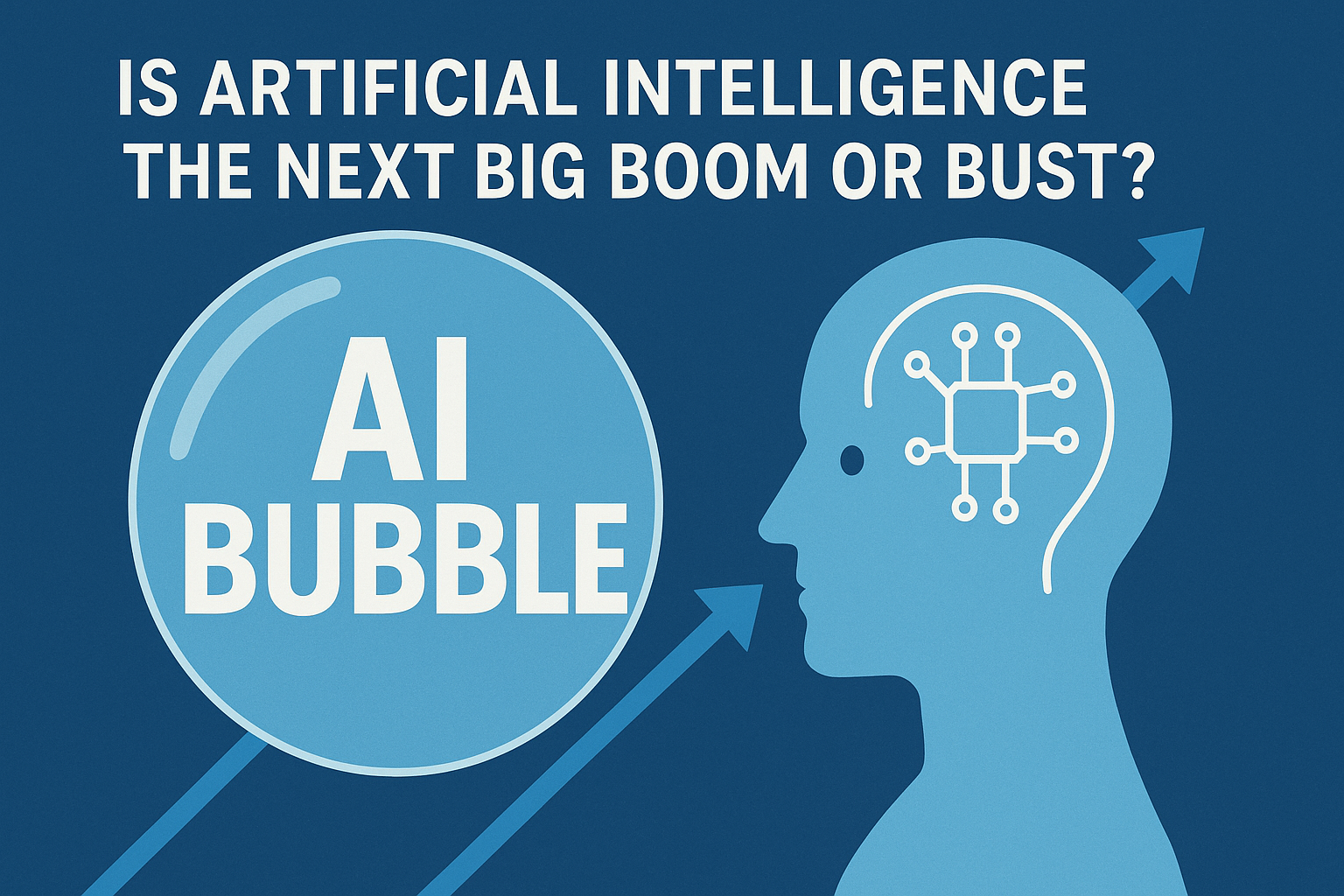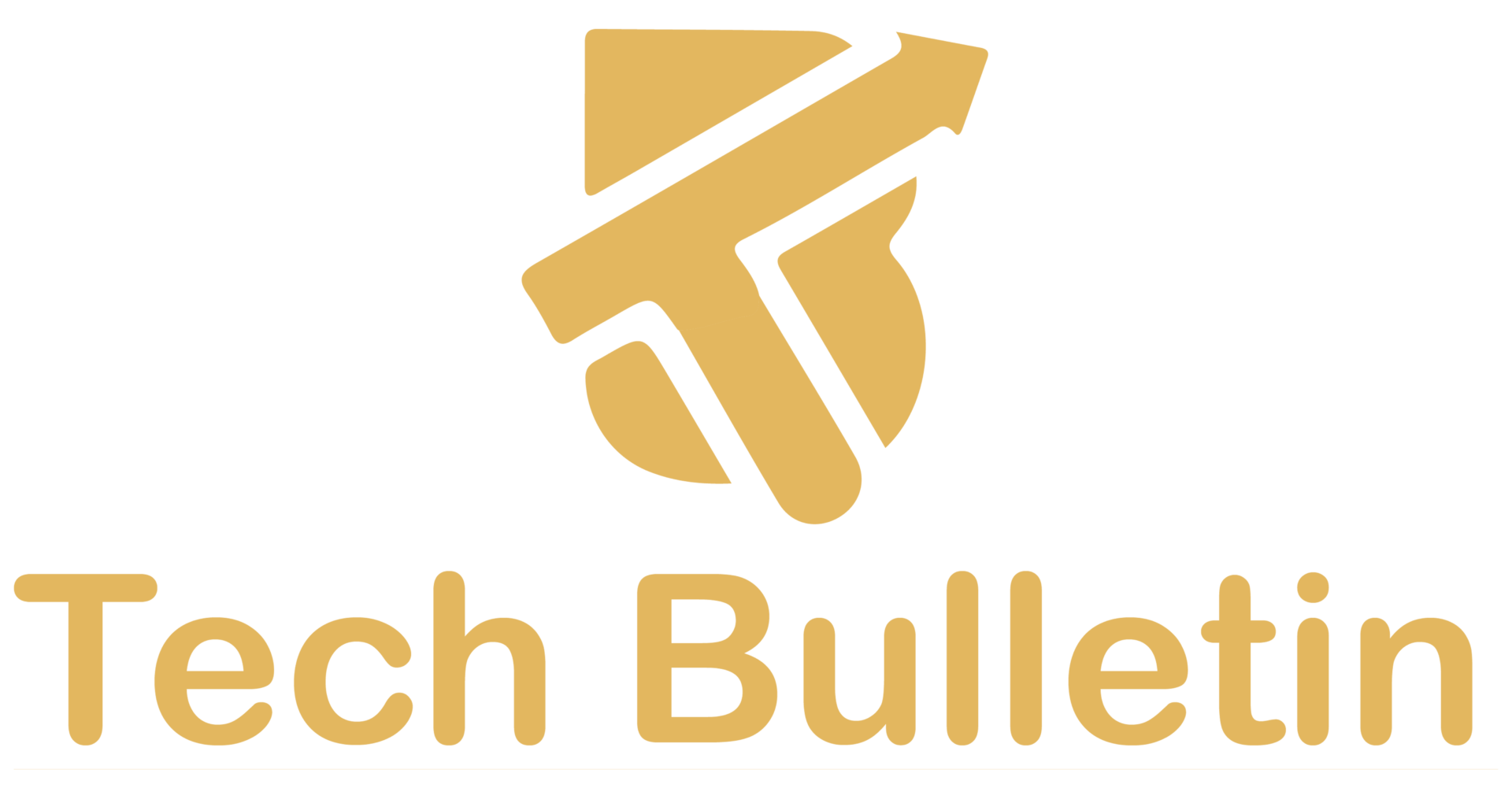The AI Bubble: Is Artificial Intelligence the Next Big Boom or Bust?

Over the past few years, it feels like everyone is talking about Artificial Intelligence or AI for short. From chatbots that can write essays to algorithms that can create art, AI has taken the world by storm. Companies are racing to integrate AI into their products, investors are pouring billions into startups, and the media can’t stop talking about it.
But with all this excitement, a new question is floating around the tech and finance world: Are we living in an AI bubble?
Just like the dot-com bubble of the early 2000s, some experts believe AI might be experiencing a period of inflated expectations and soaring valuations that could eventually pop. Others say we’re just getting started, and AI will transform the world in ways we can’t yet imagine.
In this article, we’ll break down what an AI bubble is, why people think it might exist, what signs to watch for, and whether it’s something to fear.
What Is an AI Bubble?
In economic terms, a bubble happens when the price or value of something like housing, stocks, or a new technology; grows far beyond what it’s actually worth. This usually happens because of hype, speculation, and fear of missing out (FOMO). Eventually, when reality sets in, the bubble “bursts,” and prices drop sharply. So, when people talk about an AI bubble, they’re referring to the idea that:
- The hype around AI has driven unrealistic expectations, and
- The market value of AI companies and projects may not match their true long-term potential.
Why Everyone Is Talking About AI
Artificial Intelligence, or AI, might sound like a brand-new invention, but it’s actually been around since the 1950s. What’s different today is how powerful and accessible it has become. Thanks to new tools like ChatGPT and image generators such as Midjourney, anyone can now create content, code, or designs in just seconds.
Big tech companies like Google, Microsoft, Amazon, and Nvidia are investing heavily in AI research, making the technology smarter and faster every day. Businesses are jumping on board too, using AI to write marketing content, analyze data, and automate repetitive tasks; all to save time and boost productivity.
Add to that the nonstop buzz from news outlets and social media showing off AI’s potential, and it’s no wonder everyone’s talking about it. AI feels like it’s everywhere, promising to make life simpler and work more efficient, but when excitement turns into the belief that it can change everything overnight, that’s when experts start warning about a possible “AI bubble.”
Are We in an AI Bubble Right Now?
So, are we really in an AI bubble right now? Well, it depends on who you ask. Some experts believe we are, pointing out that many AI startups are being valued at billions of dollars even though they don’t yet have solid products or clear ways to make money.
There’s also been a rush of investor enthusiasm; venture capital funding for artificial intelligence skyrocketed between 2023 and 2025, with some companies raising huge sums before even launching anything. Add in all the media hype and unrealistic expectations that AI can instantly fix everything from customer service to healthcare, and you can see why some people think the excitement might be overblown.
But others argue that this isn’t a bubble at all. They point out that AI is already delivering real results in industries like healthcare, finance, and education. The technology is backed by powerful infrastructure from cloud computing to advanced chips like Nvidia’s, and supported by both governments and big corporations investing heavily in innovation.
Economists even say AI could boost global productivity the way electricity and the internet once did. In truth, there’s a mix of hype and genuine progress, which makes this stage of AI development both risky and revolutionary.
Lessons from the Dot-Com Bubble
To understand whether we’re really in an AI bubble, it helps to look back at the dot-com bubble of the late 1990s. Back then, thousands of internet startups appeared almost overnight, each promising to revolutionize the world.
Investors poured in money, stock prices soared, and excitement reached unbelievable levels, until everything came crashing down around 2000. But the internet didn’t disappear; it simply matured. The crash cleared out companies that lacked real business models and left behind true innovators like Amazon, Google, and eBay.
The big lesson is that bubbles don’t destroy important technologies; they just reset inflated expectations. The same could happen with artificial intelligence. Even if the AI bubble does burst, it won’t mean the end of AI; it will just separate short-lived hype from meaningful, lasting innovation.
How to Tell If the AI Bubble Might Burst
So how can we tell if the AI bubble might burst? Experts say there are a few warning signs to keep an eye on. One of the biggest red flags is when investors start throwing money at every AI startup without really checking whether the ideas make sense or have solid business plans.
Another clue is when companies use “AI” as a buzzword just to attract attention or funding, even if their technology barely involves artificial intelligence at all. Inflated valuations are also a concern; especially when new startups with little or no revenue are valued higher than well-established, profitable businesses.
And when the public starts believing that investing in AI is a guaranteed win, overconfidence can set in. Finally, government regulations could slow things down if policymakers step in to control how AI develops. None of these signs guarantee a crash is coming, but they’re reminders to stay realistic and not get swept up in the hype surrounding artificial intelligence.
Why AI Is Still Worth the Hype
1. AI in Healthcare
AI is helping doctors and scientists work smarter and faster than ever before. It can detect diseases in their earliest stages, predict patient risks, and even help design new drugs in record time. These tools don’t replace doctors; they support them by analyzing massive amounts of data that humans simply can’t process alone. As a result, patients benefit from earlier diagnoses and more effective treatments.
2. AI in Education
In schools and online learning platforms, AI is transforming how students learn. Instead of one-size-fits-all lessons, personalized tutoring systems powered by AI can adjust to each student’s pace and style. That means struggling learners get extra help, while advanced students can move ahead more quickly. This type of smart learning technology is making education more inclusive and effective.
3. AI in Business
For businesses, AI has become a valuable assistant. It can handle repetitive tasks like data entry, scheduling, and report generation, freeing up time for employees to focus on creative and strategic work. Many companies also use AI to write marketing content, manage customer service chatbots, or analyze data trends to make better business decisions. The result is more efficiency, lower costs, and happier teams.
4. AI in Climate and Science
Beyond offices and classrooms, AI is proving to be a powerful ally in protecting our planet. Scientists use AI models to predict weather patterns, track climate change, and design new renewable energy solutions. From forecasting hurricanes to improving solar power efficiency, artificial intelligence helps researchers make smarter, faster decisions that benefit the environment and society as a whole.
Even if some AI startups don’t survive the hype, these long-term benefits won’t disappear. The underlying technology is already too useful, too widespread, and too deeply woven into modern life to fade away. AI is here to stay and it’s still worth the excitement.
How to Approach AI Wisely As a Consumer or Investor
You don’t need to be an economist to make smart choices about AI. Here’s how to stay balanced:
- Stay curious, but skeptical, Learn what AI really is and isn’t. Don’t believe every headline or claim.
- Follow real-world use cases, Pay attention to companies that show measurable results; not just flashy demos.
- Diversify if investing, Don’t put all your money in AI-related stocks or funds. Spread your risk.
- Look at fundamentals; A company should have a working product, clear demand, and a path to profit.
- Remember that technology evolves in waves. The AI boom may slow down, but another phase of innovation will follow.
The Human Side of the AI Boom
Beyond the money and market speculation, AI raises important human questions.
Jobs and the Future of Work
One of the biggest worries people have is whether AI will take away jobs. It’s true that automation is replacing certain repetitive or manual tasks, but AI is also creating new opportunities. Many experts believe that instead of replacing humans completely, AI will help people do their jobs better; speeding up tasks, providing insights, and freeing up time for creative or strategic thinking. The key is learning to work with AI, not against it.
Ethics and Responsibility
AI also brings up serious ethical questions. How do we make sure artificial intelligence is used fairly and responsibly? Issues like data privacy, algorithmic bias, and misinformation are becoming more important as AI grows. That’s why companies and governments are now setting up ethical guidelines and regulations to keep AI development transparent and accountable.
Education and AI Readiness
Schools and universities are also rethinking how to prepare students for an AI-driven world. Teaching traditional subjects is no longer enough; students need digital literacy, critical thinking, and hands-on experience with AI tools. Embracing AI in education the right way, we can empower the next generation to use technology wisely and responsibly.
Creativity and Human Imagination
Then there’s the question of creativity. Can machines truly be creative, or are they just copying what humans have already made? AI can generate art, music, and writing that looks impressive, but it still relies on human data and direction. True creativity; the spark that comes from emotion, experience, and curiosity, remains a uniquely human trait. AI may enhance creativity, but it can’t replace it.
In the end, these conversations matter just as much as the financial ones. They remind us that technology should serve people, not the other way around. Artificial intelligence can be a powerful tool for progress, but it’s our responsibility to guide how it’s used.
What Happens If the AI Bubble Bursts?
If the AI bubble does burst, it won’t necessarily be a disaster for technology or innovation. What’s more likely is that the market will correct itself; weaker startups without solid business models may shut down or be acquired by stronger companies with real solutions.
Investors will start focusing on businesses that create genuine value and solve real-world problems, rather than chasing hype. Governments may also step in with clearer regulations to ensure AI is used responsibly and ethically.
And just like what happened after the dot-com crash, a slowdown could spark a new wave of smarter, more meaningful innovation. In the long run, a burst might actually help create a healthier, more stable AI industry built on substance instead of speculation.






